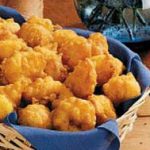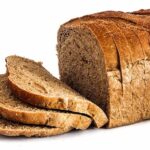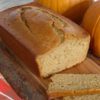Pumpkin Pie: America’s Favorite Holiday Pie

Probably my all-time favorite holiday pie is, and has always been, pumpkin. Home baked, store bought, made with fresh fruit (yes, pumpkin is a fruit) or canned, when someone yells pumpkin pie, I’m there. And while some have been better than others, I can honestly say I’ve never tasted a pumpkin pie I didn’t like. That said, I’m reminded of an amusing side story.
My mom, as I’ve mentioned in several of my writings, was a wonderful cook. She used to bake what our family and friends considered some of the best pumpkin pie we ever put in our mouths. One year while helping her prepare the family's Thanksgiving meal I asked for her pumpkin pie recipe. She laughed and told me that the pumpkin pies I was so fond of while growing up were actually sweet potato pies, and her “secret recipe” could be found on the label of any can of Libby’s® pumpkin puree. And that, friends, is when I discovered why my pumpkin pies never tasted like hers.
Historians estimate that the pumpkin has been around for more than 9,000 years, originating in Central America. In fact, archaeologists who discovered seeds in the Oaxaca Highlands of Mexico dating back to between 7,500 and 5,500 B.C., believe pumpkin to be one of the world’s first cultivated foodstuffs.
It is thought that French explorer Jacques Cartier brought “pompoms” (a word derived from the Greek word “pepon” meaning large melon) from Central America back to Europe in 1536. From there they were introduced to England, where they were called ”pumpion.” A few decades after English colonists arrived in the New World the English word pumpion became Americanized to “pumpkin,” the name by which it is known today.
America’s first pumpkin pies were certainly nothing at all like those of today. Since settlers to the New World initially had no ovens in which to bake, nor wheat for flour to make pastry, the first pumpkin pies were likely made by hollowing out the shell, filling it with milk, honey, and spices, then baking it in hot ashes until the flesh was soft enough to scrape out and eat.
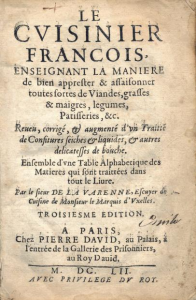 In 1653 the French cookbook Le Vrai Cuisinier Francois (The French Cook) was translated and published in England containing what is believed to be the first pumpkin pie recipe that included pastry:
In 1653 the French cookbook Le Vrai Cuisinier Francois (The French Cook) was translated and published in England containing what is believed to be the first pumpkin pie recipe that included pastry:
Tourte of Pompom
Boile it with good mix, pass it through straining pan very thick, and mix with sugar, butter, a little salt and if you will, a few stamped almonds, let all be very thin. Put it in your sheet of paste; bake it. After it is baked, besprinkle it with sugar and serve.
Then in 1655 a popular English cookbook The Compleat Cook by William Montague, personal cook to Henrietta Maria Queen of England, Scotland, and Ireland, was published. Pages 14 and 15 of the book revealed his recipe for pumpkin pie.
“Take about halfe a pound of Pumpion & slice it, a handful of Tyme, a little Rosemary, Parsley and sweet Marjoram slipped off the stalks, and chop them small, then take Cinamon Nutmeg, Pepper, and six Cloves, and beat them; take ten Eggs and beat them, then mix them, and beat them altogether, & put in as much Sugar as you think fit, then fry them like a froiz; after it is fryed, let it stand till it be cold, then fill your Pye, take sliced Apples thinne round wayes, and lay a row of the Froiz, and a layer of Apples with Currans betwixt the layer while your Pye is fitted, and put in a good deal of sweet butter before you close it; when the Pye is baked, take six yolks of Eggs, some white-wine or Verjuyce, & make a Caudle of this, but not too thick; cut up the Lid and put it in, stir them well together whilst the Eggs and Pumpions be not perceived, and so serve it up. — W.M.
In 1670 Hanna Woolley, who has been described as the Martha Stewart of the 17th century, and in all probability the first female ever to make a living authoring books on cookery and household management, published The Queen-like Closet. In part two of Woolley’s book, recipe 131 is for “Pumpion-Pie”:
“Take a Pumpion, pare it, and cut it in thin slices, dip it in beaten Eggs and Herbs shred small, and fry it till it be enough, then lay it into a Pie with Butter, Raisins, Currans, Sugar and Sack, and in the bottom some sharp Apples; when it is baked, butter it and serve it in.
It is relatively certain that the English colonists brought cookbooks with them to their new home in America, though no one knows if either of these were among them.
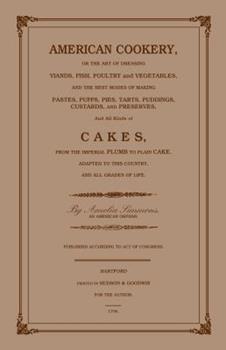 America’s first cookbook, American Cookery, was published in 1796. Written by Amelia Simmons, it featured ingredients indigenous to this country and included not one but two pumpkin puddings baked in a crust very similar to present day pumpkin pies.
America’s first cookbook, American Cookery, was published in 1796. Written by Amelia Simmons, it featured ingredients indigenous to this country and included not one but two pumpkin puddings baked in a crust very similar to present day pumpkin pies.
“Pompkin Pudding No.1. One quart stewed and strained, 3 pints cream, 9 beaten eggs, sugar, mace, nutmeg and ginger, laid into paste No. 7 or 3, and with a dough spur, cross and checker it, baked in dishes three quarters of an hour.
Pompkin Pudding No. 2. One quart of milk, 1 pint pumpkin, 4 eggs, molasses, allspice and ginger in a crust, bake 1 hour.”
By the early 1800s, all pumpkin pies prepared by American cooks continued to follow and improve on Simmons’ format. The following recipe included in Mary Randolph’s 1824 completely American cookbook, The Virginia Housewife, included the addition of brandy and employed only a bottom crust.
“Stew a fine sweet pumpkin till soft and dry, rub it through a sieve, mix with the pulp six eggs quite light, a quarter of a pound of butter, half a pint of new milk, some pounded ginger and nutmeg, a wine glass of brandy and sugar to your taste. Should it be too liquid, stew it a little dry; put a paste round the edges and in the bottom of a shallow dish or plate, pour in the mixture, cut some thin bits of paste, twist them and lay them across the top and bake it nicely.”
It wasn’t long before the popularity of pumpkin pie made it an essential part of every Thanksgiving celebration. By the mid-1800s pumpkin pie songs, ditties, and poems began appearing in newspapers, ladies’ magazines, and children’s books throughout America, a reign that lasted well into the 20th centur
Although the next 90 years brought many trendy flavor combinations to pumpkin pies, the technique used to make them remained essentially the same as described in Amelia Simmons’ recipe—stew the pumpkin for hours, mash it, strain it, add milk, eggs, sugar, and spices, and bake in a pastry crust—things were about to change.
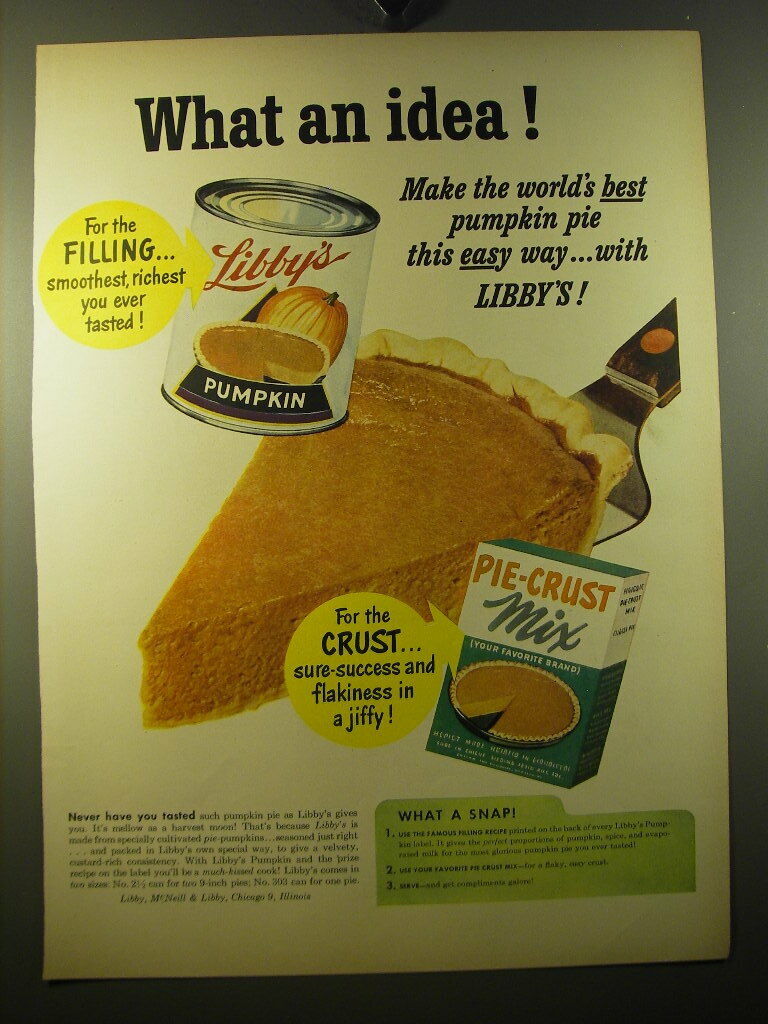 The turn of the century and a rapidly expanding canning industry brought with it an entirely new innovation—canned pumpkin. American housewives quickly embraced this new product and by the 1920s canned pumpkin became a staple in households throughout the country. Not only was canned pumpkin convenient, it was cheap (3 cans for a quarter in 1911), and much safer than home-canned pumpkin.
The turn of the century and a rapidly expanding canning industry brought with it an entirely new innovation—canned pumpkin. American housewives quickly embraced this new product and by the 1920s canned pumpkin became a staple in households throughout the country. Not only was canned pumpkin convenient, it was cheap (3 cans for a quarter in 1911), and much safer than home-canned pumpkin.
Also the early years of the 20th century brought about changes in commercial baking industry—new and better equipment, more efficient ovens. Not only could restaurants, diners, and hotels choose from a huge array of pre-baked goods, including pies, but grocers and other retail outlets made them available to consumers as well.
The early 1960s brought another innovation to the world of pumpkin pies—frozen ready-to-eat pies. A few years later, the frozen pumpkin pie also became available in a bake-off variety. Hailed as fail-proof these latest addition brought the freshness, aroma, and flavor of scratch-made pies with time-saving convenience found only in frozen pies. Both of these continue to be popular options today.
You may be surprised that Americans eat more pumpkin pie on Thanksgiving than turkey. In fact it has been estimated that more than 50-million pumpkin pies a year are consumed in the United States alone each and every Thanksgiving.
In closing, i’d like to leave you with this fact. According to Guinness World Records, largest pumpkin pie ever made was on September 9, 2010 at the New Bremen Festival in Ohio. It measured a staggering 20 feet in diameter and weighed 3,699 pounds. Making this monstrosity took 2,796 eggs, 525 pounds sugar, 1,212 pounds canned pumpkin, 109 gallons evaporated milk, 14 pounds cinnamon, 7 pounds salt, and 440 sheets of dough for the crust. That’s around 40 times the size of a regular pie.
And for you bakers out there, I couldn’t close without sharing my mom’s “secret” pumpkin pie recipe.
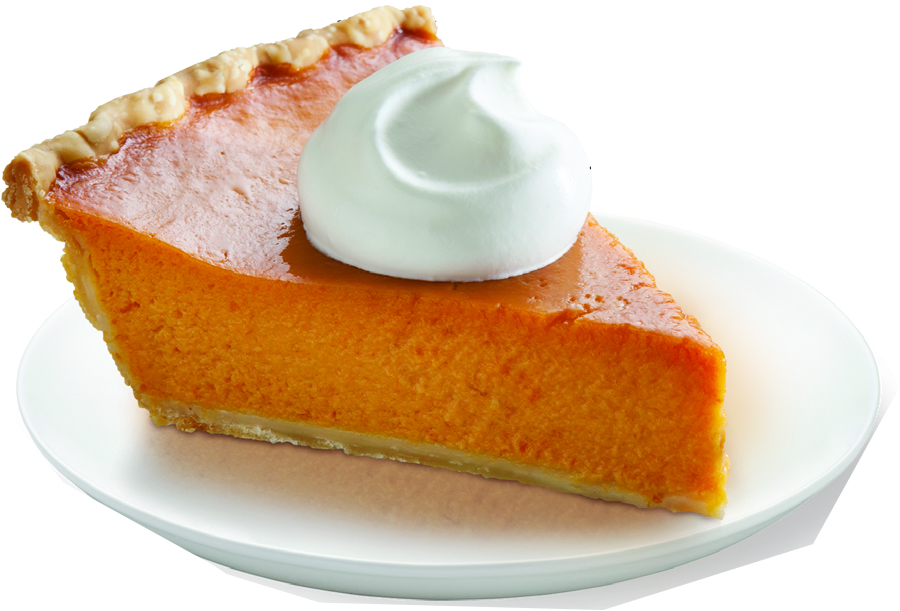 Sugar's Pumpkin Pie (aka Sweet Potato Pie)
Sugar's Pumpkin Pie (aka Sweet Potato Pie)
Recipe makes one 9-inch pie; 8-10 servings
- 3/4 cup granulated sugar
- 1 teaspoon ground cinnamon
- 1/2 teaspoon ground ginger
- 1/2 teaspoon salt
- 1/4 teaspoon ground cloves
- 2 large eggs
- 1 can (15 oz.) sweet potatoes, well drained
- 1 can (12 oz.) evaporated milk
- 1 unbaked 9-inch (4 cup volume) deep-dish pie shell
- Whipped cream (optional)
Mix sugar, cinnamon, ginger, salt and cloves in small bowl. Beat eggs in large bowl. Stir in the drained sweet potatoes and sugar-spice mixture. Gradually stir in evaporated milk. Pour into pie shell.
Bake in preheated 425° F oven for 15 minutes. Reduce temperature to 350° F; bake for 40 to 50 minutes or until knife inserted near center comes out clean. Cool on wire rack for 2 hours. Serve immediately or refrigerate. Top with a dollop of whipped cream before serving.
NOTE: This recipe can also be found on the label of LIBBY'S® Pumpkin where it has appeared since 1950.
This story is lovingly dedicated to my mom, Claire Juanita Etchieson-Melugin, December 20, 1922 to March16, 1995
